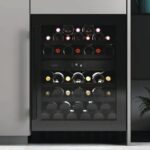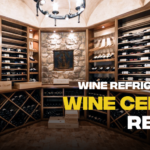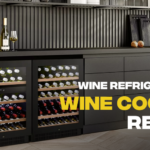La Sommelière Wine Cooler Error Code: E3 / E4
Post Date: June 14, 2024

La Sommelière wine coolers are designed with advanced technology to ensure your wine is stored in the best possible conditions. However, they can sometimes experience issues, such as the E3 or E4 error code, which indicates a defrost sensor failure. Understanding the causes of this error, potential DIY solutions, and preventive measures can help you manage and prevent such problems effectively.
Causes of Defrost Sensor Failure
1. Faulty Defrost Sensor
The most common cause of an E3 or E4 error code is a malfunctioning defrost sensor. The sensor may be defective from the start or may have degraded over time due to wear and tear.
2. Loose or Damaged Wiring
Wiring issues can disrupt the connection between the defrost sensor and the control board. Loose or damaged wires can lead to incorrect readings, triggering the error code.
3. Temperature Fluctuations
Significant temperature changes within the cooler can impact the performance of the defrost sensor. Excessive frost build-up or prolonged high humidity can also affect the sensor’s accuracy.
4. Control Board Issues
Problems with the control board, which processes the signals from the defrost sensor, can also result in an E3 or E4 error code. If the control board is malfunctioning, it might misinterpret the data from the sensor.
DIY Solutions
Safety First
Before attempting any DIY solutions, always unplug your wine cooler to avoid electrical hazards. Ensure you are familiar with the basic components of your cooler and have the necessary tools at hand.
1. Inspect and Clean the Sensor
- Locate the Defrost Sensor: Refer to your cooler’s manual to find the exact location of the defrost sensor. It is usually near the evaporator coils.
- Check for Obstructions: Inspect the sensor for any ice build-up or debris that might be affecting its performance. Use a soft cloth to gently clean the sensor.
- Defrost Manually: If there is excessive frost, allow the cooler to defrost manually by keeping it unplugged for several hours. This can sometimes reset the sensor.
2. Check the Wiring
- Access the Wiring: Open the cooler’s back panel to access the wiring connected to the defrost sensor.
- Inspect Connections: Look for any loose or disconnected wires. Ensure all connections are secure.
- Look for Damage: Check for any signs of frayed or damaged wires. If you find any, consider replacing them.
3. Test the Sensor
- Multimeter Test: Use a multimeter to check the continuity of the defrost sensor. Set the multimeter to the resistance setting and place the probes on the sensor terminals. The reading should match the specifications in your cooler’s manual.
- Replace if Necessary: If the sensor shows no continuity or the reading is outside the recommended range, it may need to be replaced. Purchase a compatible defrost sensor and follow the manufacturer’s instructions for replacement.
4. Reset the Control Board
- Power Cycle: After checking and possibly replacing the sensor, reset the control board by unplugging the cooler for a few minutes and then plugging it back in.
- Check for Updates: Some coolers might have firmware updates available. Check the manufacturer’s website for any updates that might address sensor issues.
Preventive Measures
Regular Maintenance
- Clean the Coils: Keep the evaporator coils clean and free from dust and debris. This helps maintain efficient cooling and reduces the risk of frost build-up.
- Defrost Regularly: Periodically defrost your cooler, especially if you notice any frost accumulation. This can prevent excessive build-up that affects sensor performance.
Maintain Stable Temperatures
- Avoid Frequent Door Openings: Try to minimize the number of times you open the cooler door. Frequent openings can cause temperature fluctuations and increased humidity.
- Monitor Humidity Levels: Use a hygrometer to monitor and maintain appropriate humidity levels inside the cooler. High humidity can lead to frost build-up.
Professional Check-Ups
- Annual Inspections: Schedule annual maintenance checks with a professional technician to ensure all components, including the defrost sensor, are functioning correctly.
- Timely Repairs: Address any minor issues promptly before they escalate into major problems.
The E3 or E4 error code on your La Sommelière wine cooler indicates a defrost sensor failure, which can stem from various causes such as faulty sensors, wiring issues, temperature fluctuations, or control board problems. By following the detailed DIY solutions provided and implementing preventive measures, you can effectively manage and prevent this error, ensuring your wine cooler operates smoothly and maintains the optimal conditions for your wine collection.





